Facilities
COTTON SOURCING
cotton imported from USA, Australia, Egypt, Brazil, etc.
Although we do not grow our own cotton, we highly discourage any slave-picked cotton knowingly entering into our supply chain or any forced child labor being used in the process. Long-staple cotton is carefully selected to ensure our towels achieve the highest quality standard.
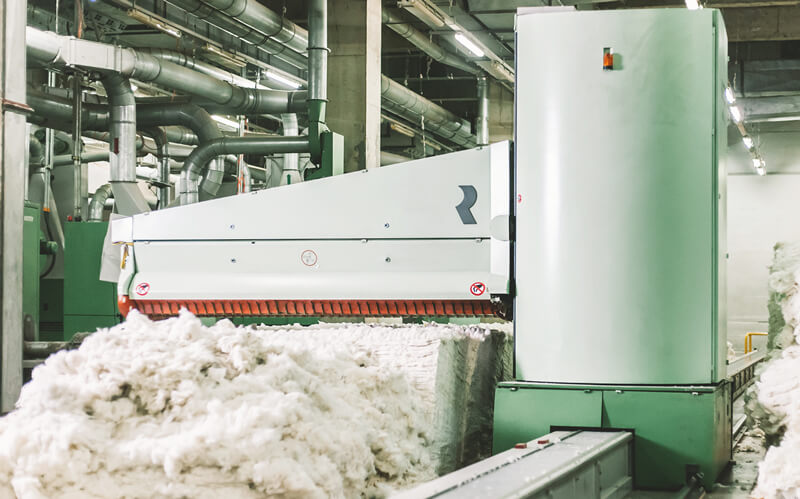
SPINNING
Spinning is often considered as the first step in textile processing. This process twists all the drawn-out strands of fibers together to form continuous threads or yarns.
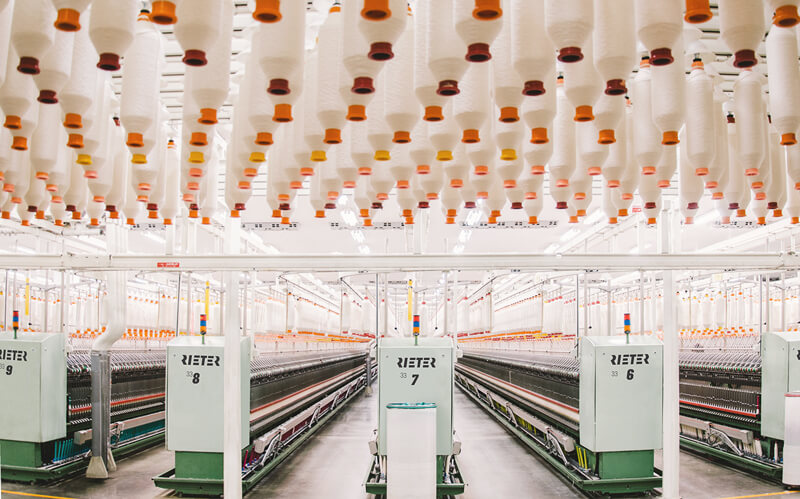
WEAVING PREPARATION
Sizing machines from Benninger
Sizing is the process of strengthening cotton yarn, so that it can endure the mechanical stress of the weaving machine. After sizing, yarn threads will be arranged in parallel rows, known as the warping process.
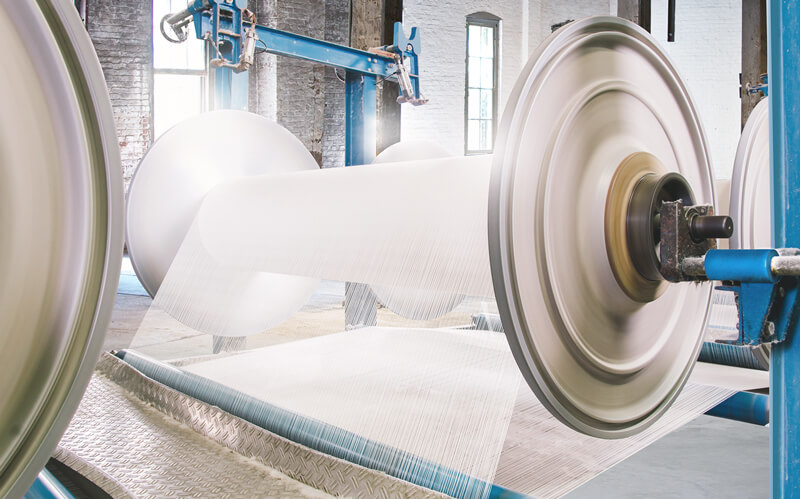
WEAVING
Annual output of 30 million pieces
A towel is woven on special looms that have two beams of longitudinal warp yarn through which the weft is fired laterally. There are two types of weaving looms: dobby and jacquard. Dobby loom is used for simple patterns(such as stripes and checks), while jacquard loom can accommodate a tremendous range of patterns including damasks, floral motifs, and geometrics.
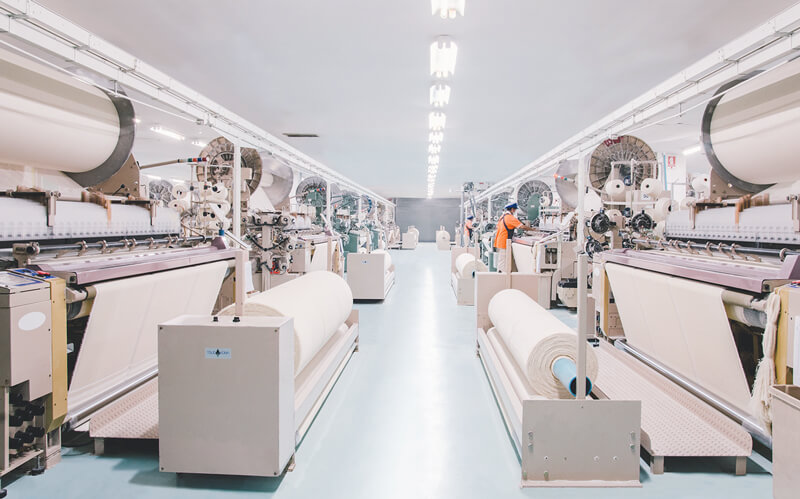
SHEARING
Shearing is the process of removing the tops of the terry loops, allowing the cotton fibers to open up and giving the towel a velvet-like feel. This process prepares the towel with a flatter and smoother surface, which is usually found in beach towels and decorative towel.
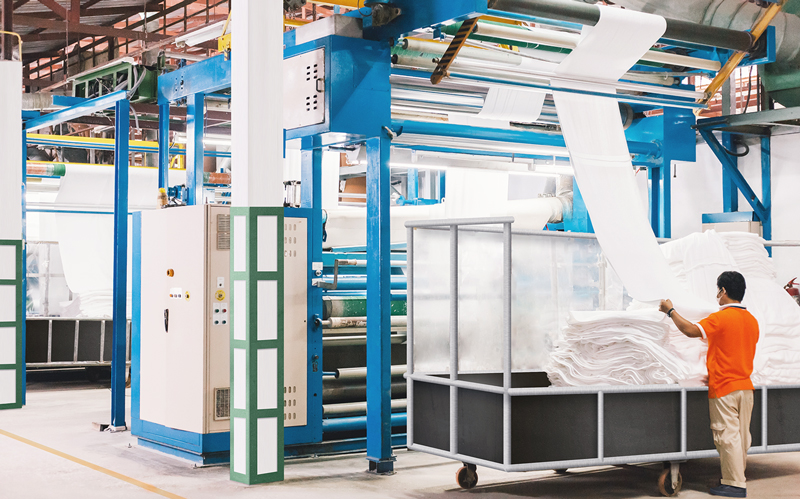
DYEING
Dyeing can take place in two forms: piece-dyeing and yarn-dyeing. Piece-dyeing takes place when the woven fabric, inteneded to be solid color, passes through high-temperature dyeing machine. Yarn-dyeding takes place before the yarn is woven and giving the final fabric multiple colors and patterns.
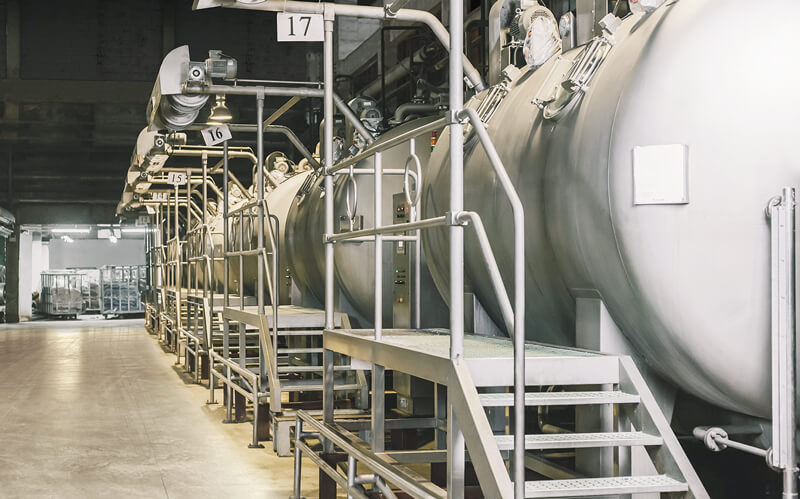
PRINTING
Pigment printing and reactive printing are available
Printing is another coloration process in towel making. The design is separated into different “color blocks” and then transferred onto mesh screens. Color dye is applied onto the towel fabric on a flat-bed printing machine, one color block at a time until the final design is formed.
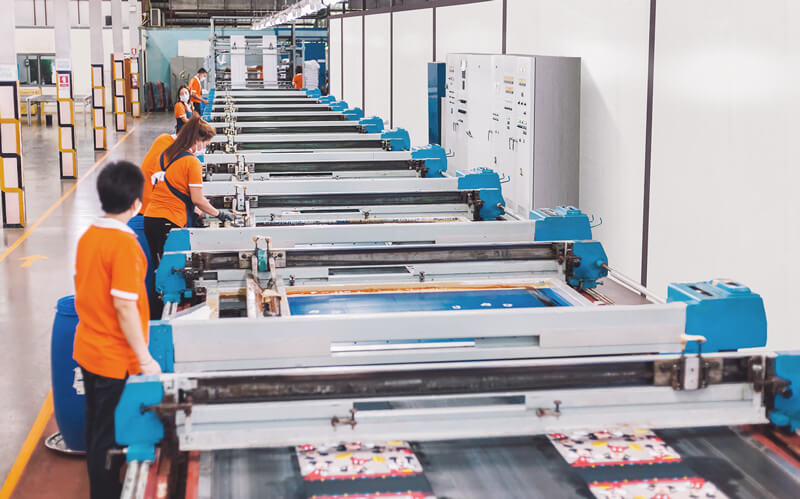
EMBROIDERY
Embroidery is considered a value-added process in which ornamental designs and embellishments are applied onto the towel fabric, using needles and threads.
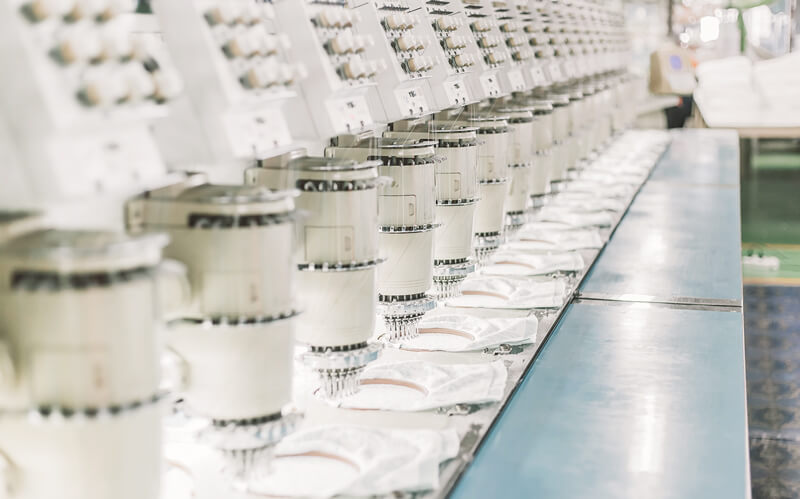
FINISHING
Finishing stage consists of two important treatment processes: wet treatment and dry treatment.
Wet treatment is the process where softening agent, hydrophilic agent, and/or antibacterial agent are applied after dyeing or printing. As for dry treatment, it is the process where towels are tumble-dried and being stretched out in the stentering process.
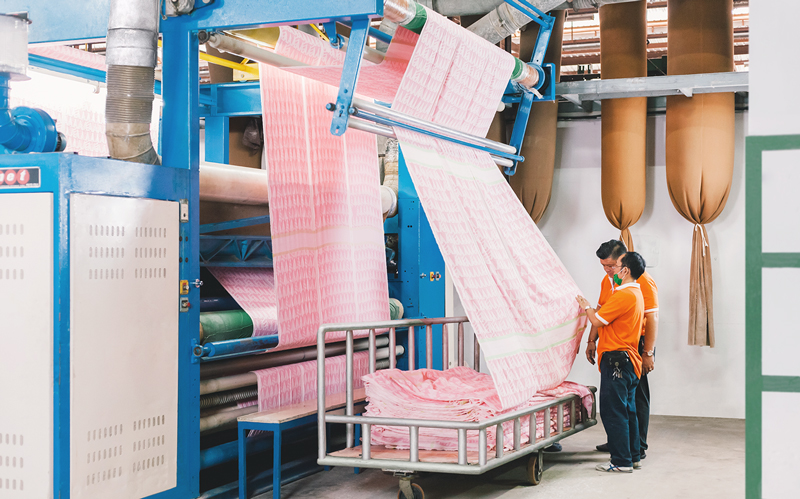
CUTTING & SEWING
over-lock sewing machines for wash clothes
and Juki sewing machines.
Being at the final stage, towels will go through longitudinal cutting and hemming machines. Cross- hem sewing will then complete the whole towel production process and final inspection will follow.
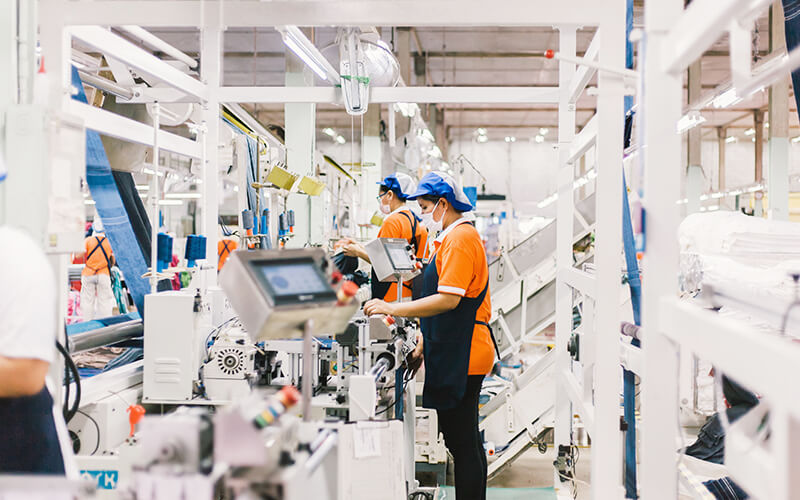

COTTON SOURCING
cotton imported from USA, Australia, Egypt, Brazil, etc.
Although we do not grow our own cotton, we highly discourage any slave-picked cotton knowingly entering into our supply chain or any forced child labor being used in the process. Long-staple cotton is carefully selected to ensure our towels achieve the highest quality standard.

SPINNING
Spinning is often considered as the first step in textile processing. This process twists all the drawn-out strands of fibers together to form continuous threads or yarns.

WEAVING PREPARATION
Sizing machines from Benninger
Sizing is the process of strengthening cotton yarn, so that it can endure the mechanical stress of the weaving machine. After sizing, yarn threads will be arranged in parallel rows, known as the warping process.

WEAVING
Annual output of 30 million pieces
A towel is woven on special looms that have two beams of longitudinal warp yarn through which the weft is fired laterally. There are two types of weaving looms: dobby and jacquard. Dobby loom is used for simple patterns(such as stripes and checks), while jacquard loom can accommodate a tremendous range of patterns including damasks, floral motifs, and geometrics.

SHEARING
Shearing is the process of removing the tops of the terry loops, allowing the cotton fibers to open up and giving the towel a velvet-like feel. This process prepares the towel with a flatter and smoother surface, which is usually found in beach towels and decorative towel.

DYEING
Dyeing can take place in two forms: piece-dyeing and yarn-dyeing. Piece-dyeing takes place when the woven fabric, inteneded to be solid color, passes through high-temperature dyeing machine. Yarn-dyeding takes place before the yarn is woven and giving the final fabric multiple colors and patterns.

PRINTING
Pigment printing and reactive printing are available
Printing is another coloration process in towel making. The design is separated into different “color blocks” and then transferred onto mesh screens. Color dye is applied onto the towel fabric on a flat-bed printing machine, one color block at a time until the final design is formed.

EMBROIDERY
Embroidery is considered a value-added process in which ornamental designs and embellishments are applied onto the towel fabric, using needles and threads.

FINISHING
Finishing stage consists of two important treatment processes: wet treatment and dry treatment.
Wet treatment is the process where softening agent, hydrophilic agent, and/or antibacterial agent are applied after dyeing or printing. As for dry treatment, it is the process where towels are tumble-dried and being stretched out in the stentering process.
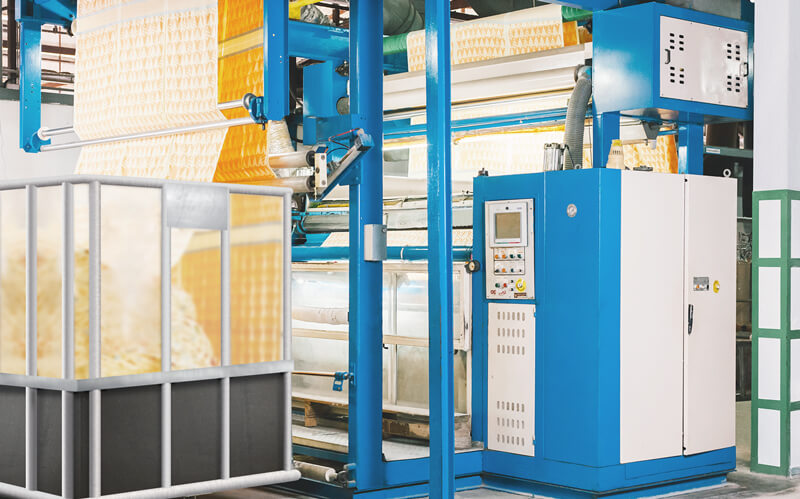
CUTTING & SEWING
over-lock sewing machines for wash clothes
and Juki sewing machines.
Being at the final stage, towels will go through longitudinal cutting and hemming machines. Cross- hem sewing will then complete the whole towel production process and final inspection will follow.

R&D
Pushing the innovation frontier, we have continuously introduced functional products into the market with a strong ground of how these products should be accessible to every consumer, not just the privileged few. Our production team and R&D have joined forces with various local academic and research institutions to extend the depth of our innovation. Whether it is fiber innovation, weaving technique, or production processing, our efforts have always been about providing valued-added services to consumers with an affordable price.
Quality Control
Double Star maintains a stringent quality system in its manufacturing processes and provides its customers with consistent, productive products. Elaborate inspection policies are enforced throughout the entire manufacturing process, starting from incoming raw cotton to finished products. Our inspection includes in-house lab test, in-line quality control, and final production inspection. These policies/inspections ensure high quality products that our customers can rely on.
Quality Control
Double Star maintains a stringent quality system in its manufacturing processes and provides its customers with consistent, productive products. Elaborate inspection policies are enforced throughout the entire manufacturing process, starting from incoming raw cotton to finished products. Our inspection includes in-house lab test, in-line quality control, and final production inspection. These policies/inspections ensure high quality products that our customers can rely on.



